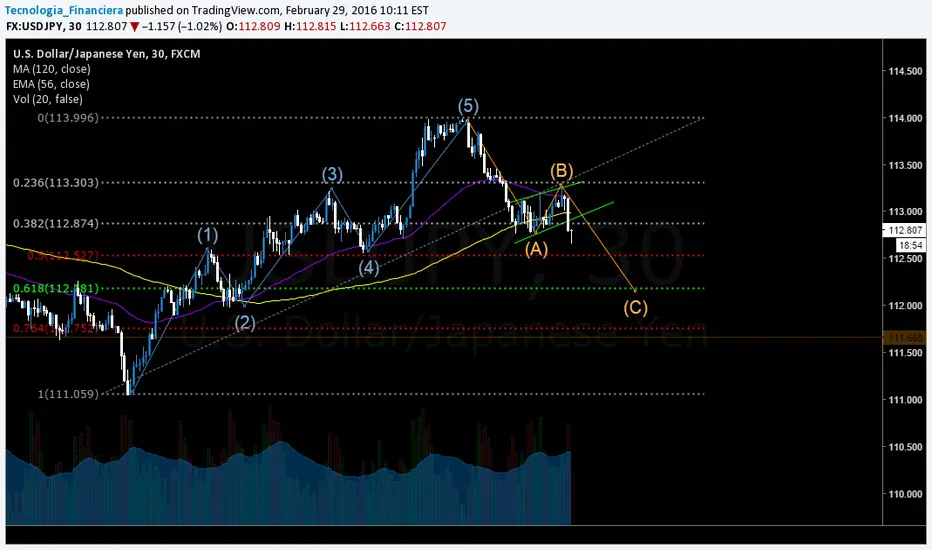USDJPY WAVE ANALYSIS 1 2 3 4 5 ABC
Note
Elliott Wave Theory was developed by R.N. Elliott and popularized by Robert Prechter. This theory asserts that crowd behavior ebbs and flows in clear trends. Based on this ebb and flow, Elliott identified a certain structure to price movements in the financial markets. Introduction to Elliott Wave Theory. A basic 5-wave impulse sequence and 3-wave corrective sequence ABC.Rule 1: Wave 2 cannot retrace more than 100% of Wave 1.
Rule 2: Wave 3 can never be the shortest of the three impulse waves. It extends about 0.618 from wave 1.
Rule 3: Wave 4 can never overlap Wave 1. Retracement should not be more than 0.382.
Rule 4: After a 5-wave impulse advance, corrections (abc) usually end in the area of prior Wave 4 low.
Wave A: Cannot retrace more than wave 4.
Wave B: Lower level than point 5.
Wave C: Should extend to 0.618.
Español:
Elliott teoría ondulatoria fue desarrollado por R. N. Elliott y popularizada por Robert Prechter . Esta teoría afirma que la conducta de la multitud sube y baja en las tendencias claras. Sobre la base de este flujo y reflujo, Elliott identificó una cierta estructura de los movimientos de precios en los mercados financieros. Introducción a la Teoría de Ondas de Elliott. Una secuencia básica 5 - onda de impulso y la secuencia de corrección de 3 ondas ABC .
Regla 1 : La onda 2 no puede volver sobre más de 100 % de la onda 1 .
Regla 2 : La onda 3 nunca puede ser la más corta de las tres ondas de impulso . Se extiende sobre 0.618 de la onda 1 .
Regla 3: La onda 4 nunca puede superponerse a la onda 1. El retroceso no debe ser más de 0.382 .
Regla 4 : Después de un avance de impulso de onda 5 , correcciones (abc ) por lo general terminan en el área inferior de la onda 4.
Onda A: No puede retroceder más que la onda 4 .
Onda B : nivel más bajo que el punto 5 .
Onda C : debe extenderse a 0.618 .
Disclaimer
The information and publications are not meant to be, and do not constitute, financial, investment, trading, or other types of advice or recommendations supplied or endorsed by TradingView. Read more in the Terms of Use.
Disclaimer
The information and publications are not meant to be, and do not constitute, financial, investment, trading, or other types of advice or recommendations supplied or endorsed by TradingView. Read more in the Terms of Use.
